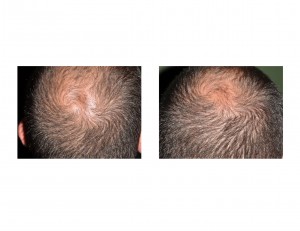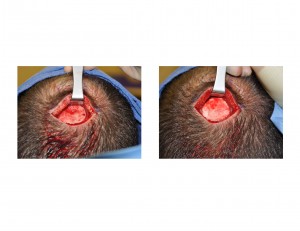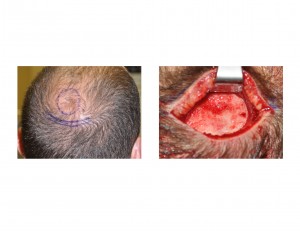Background: While the shape of the skull is typically smooth, it is not rare that one may have various small contour deformities. These could be raised or indented areas depending upon their location on the skull. Many of these skull shape issues are related to their initial formation through the cranial sutures and their fusion posts known as fontanelles.
At birth a baby has six distinct fontanelles. The larger anterior and the somewhat smaller posterior fontanelles in the midline are the most noticed due to their size. These well known soft spots are where the skull bones have not yet fused. They exist to allow the skull plates to move, permitting easier passage through the birth canal as the head is able to change shape. After birth, they allow the baby’s brain to grow since the skull is not a fused box of bone yet. The anterior fontanelle may remain open until about 18 months of age while the posterior fontanelle usually closes by 3 to 4 months of age.
But sometimes when the fontanelles fuse, they may not fill in completely with bone of normal thickness. There may no longer be an open area between the bone edges but a complete outer and inner cortex with a well formed diploic space may not fully form. This creates an indentation in the skull or a skull dimple which appears as a circular midline depression which feels like a small crater.


There is always some small amount of scalp swelling afterwards and, occasionally, some fluid will accumulate over the augmented area. This always resolves in a few weeks as the fluid is absorbed and the final skull contour appreciated.
Skull dimple correction is the smallest form of an onlay cranioplasty. It is simple, effective and has no real recovery associated with it. Any form of bone cement will work to fill the defect. Whether it is an open or a more injectable approach, the technique chosen is the one that can create the smoothest skull contour.
Case Highlights:
1) It is not rare for the skull to have indentations or dimples, most commonly occurring at the location of a previous fontanelle.
2) Skull dimple augmentation or skull dimpleplasty is a limited skull procedure that fills in the bone defect by application of a bone cement material.
3) Skull dimple augmentation can be done through either a small open incisional approach or an even smaller incisional injection technique.
Dr. Barry Eppley
Indianapolis, Indiana



